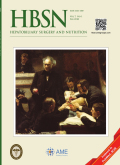How couId we image the future in hepatic surgery
On June 1952, 11 years before the first liver transplantation by Thomas Starzl and 40 years before the first use of a partial graft from a living donor, Jean Louis Lortat Jacob, in his publication reporting the first anatomic right hepatectomy, anticipated that "once the problems of tolerance to tissue grafts and their rejection have been solved, this procedure might be indicated for some hepatic diseases…". The idea to use a partial graft in patients with "hepatic diseases" will then open the concept of the minimal liver function required to survive using its unique potential of regeneration, even under immunosuppression. Anatomic resection with primary control of both inflow and outflow pedicles leaving an autonomous remnant parenchyma allowed the standardization of major hepatectomies. This approach of liver surgery ushered the modern era of hepatic resectional surgery, which aims at defining the optimal plan of resection with minimal blood loss (1).
5
2019-07-18(万方平台首次上网日期,不代表论文的发表时间)
共2页
279-280






